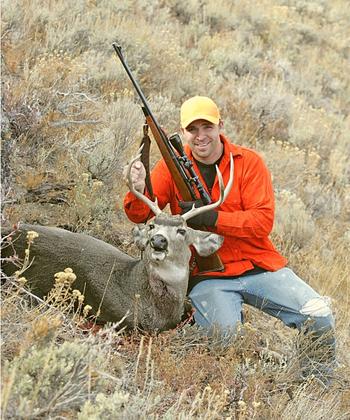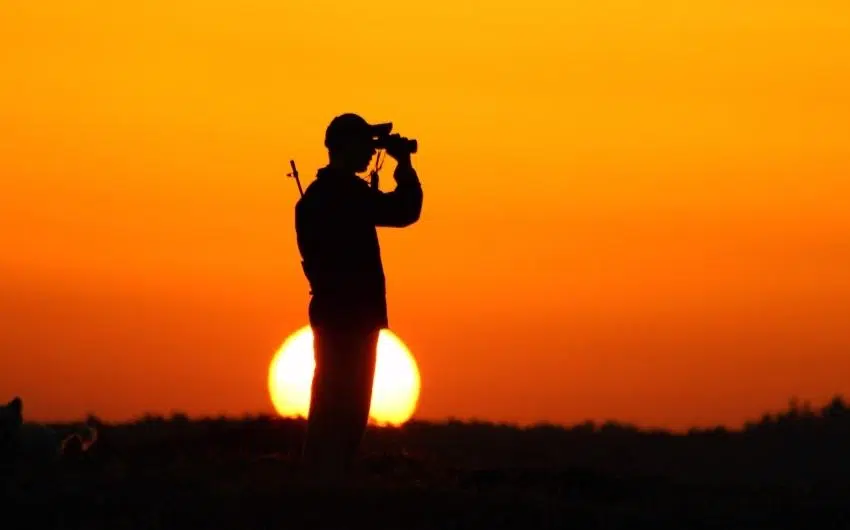Knowing which group is a primary supporter of hunter education can be difficult. Many groups support hunter education, but it can be challenging to determine which one is the primary supporter.
Hunters are an essential part of conservation. To maintain healthy populations of game animals, hunters must receive proper training and education.
The National Rifle Association (NRA) is the primary supporter of hunter education, and they have been working hard to promote and improve hunting safety for over 100 years.

Many groups support hunter education, but which one is the primary backer? Let’s look at some of the primary supporters of hunter education and see who takes the lead.
Quick Jump
ToggleWhat Is the Primary Objective of Hunters Education?
The primary objective of hunter education is to produce safe, responsible, knowledgeable, and involved hunters. Hunter education course pages are designed to achieve this goal and teach students the principles of hunting safety, ethics, game identification, conservation, and firearm handling.
In addition, students are also encouraged to become involved in their local hunting communities. Hunter education programs have been credited with reducing hunting accidents and fatalities by as much as 80 percent.
Furthermore, graduates of NRA hunter education courses are more likely to comply with state hunting regulations and less likely to commit poaching offenses. As a result, hunter education is seen as an essential tool for promoting safe and responsible hunting practices.
Which Group Is a Primary Supporter of Hunter Education?
Which Group Is a Primary Source of Hunter Education? The International Hunter Education Association (IHEA) is the primary supporter of hunter education worldwide. IHEA’s mission is to promote safe, responsible, and ethical hunting practices through education and certification programs.
The IHEA provides training and certification for hunting instructors, develops educational materials and programs, and advocates for hunter education initiatives in countries where it is not already established.
The IHEA also sponsors research on hunting-related issues such as wide range safety, ethics, and wildlife management.
Which Group Provides the Most Financial Support for Wildlife Conservation?
What group is a primary supporter of hunter education? The Nature Conservancy tops the list at $859 million annually. The Wildlife Conservation Society comes in second at $643 million, followed by the World Wildlife Fund at $576 million.
Many other organizations also contribute significant funds to wildlife conservation efforts.
Overall, private foundations and NGOs contribute the most to global wildlife conservation. In 2015, they contributed close to US$2 billion.
This is more than double the amount contributed by government agencies ($844 million) and represents a growing trend of philanthropy directed towards conservation causes.
However, governments are typically the most significant contributors to funding specific projects or programs. For instance, the U.S. Fish and Wildlife Service’s International Affairs program received $60 million in 2017, while the U.S.
Agency for International Development’s biodiversity conservation program received $50 million.
What Does the International Hunter Education Association Do?
The International Hunter Education Association (IHEA) is a membership organization that serves hunting and shooting sports educators by developing and implementing standards.
IHEA members are involved in teaching hunter education, firearm safety, and hunter safety courses in the United States and internationally. The IHEA was founded in 1991, and its headquarters is in Northbrook, Illinois.
The mission of the IHEA is to promote responsible, stay safe participation in hunting and shooting sports through Leadership, Education, Resources, and Standards.
Leadership: The IHEA provides leadership in hunter education at the international level by working with governmental agencies, non-governmental organizations, instructors, delivery systems marketing partners, and other interested parties.
Who Provides the Primary Funding for Wildlife Conservation and Management in North America?
Several organizations provide funding for wildlife conservation in North America, but the primary source of financing is general tax revenue. This includes personal and corporate income taxes and other taxes imposed by federal, state, and local governments.
The majority of this funding goes to support the work of agencies like the U.S. Fish and Wildlife Service and the National wildlife federation, which are responsible for managing and protecting our nation’s wildlife resources.
These agencies use various methods to conserve wildlife, including habitat preservation, species reintroduction, and law enforcement efforts to prevent illegal hunting and poaching.
While private donations play a role in supporting these conservation efforts, they are typically a tiny percentage of the overall funding pie.
Which Would Be Considered a Responsible Hunter?
The most responsible hunters exhibit the best behavior, which includes courtesy, respect for others and wildlife, and involvement.
For example, a responsible hunter never litters or trespass on someone else’s property. They would also obey all hunting regulations and take care to avoid harming non-target animals.
Finally, responsible hunters are always willing to educate others about hunting ethics and how to be safe and respectful while enjoying the outdoors.
Which Part of the Firearm Loads, Fires, and Ejects Shells or Cartridges?
The action is responsible for loading, firing, and ejecting shells or cartridges in a firearm. The moving part of the gun allows it to cycle through these three functions repeatedly.
The action is usually located behind the gun’s breech, which is the point where bullets are inserted into the firearm.
When a bullet is fired, expanding gases from the burning powder propel it down the gun’s barrel. The Pressure from these gases also travels down a channel in the barrel called the “recoil lug.”
This channel directed Pressure onto a spring-loaded device called an “action rod” or “actuator.” The actuates as it depresses, unlocking the breechblock and causing it to slide rearward. As the breechblock slides, it cocks the hammer and extracts the spent cartridge case from the chamber.
All Modern Firearms Have Three Basic Groups of Parts. What Are These Parts?
Firearms are classified as either long guns or handguns. Long guns include rifles and shotguns, while handguns are further divided into pistols and revolvers. All modern firearms have three essential parts: the action, the stock, and the barrel.
The action is where the firing mechanism is located. This includes the hammer or striker, the trigger, and the associated springs and pins.
The stock helps attach the action to the rest of the firearm and supports shooting. It also contains features that aid in operation or comfortable use, such as a pistol grip on a handgun.
Finally, the barrel is where the bullet will travel after being fired. The length and diameter of barrels vary depending on the type of firearm and intended use. For example, a shotgun will have a much shorter and broader barrel than a rifle.
What Is the Burning Material in a Firearm?
The burning material in a firearm is typically burning powder. This powder is composed of tiny particles designed to ignite and burn rapidly. The purpose of the burning powder is to create a controlled explosion that will propel the bullet out of the gun’s barrel.
What Are the Five Primary Rules of Firearm Safety?
There Are Five Primary Rules of Firearm Safety. What Is One of These Rules? The five primary rules and regulations of firearm safety are:
1. Always assume that every gun is loaded.
2. Never point a gun at anything you are unwilling to destroy.
3. Keep your finger off the trigger until you are ready to shoot.
4. Be sure of your target and what is beyond it.
5. Never use alcohol or drugs before or while handling firearms.
One of the essential rules of firearm safety is always to assume that every gun is loaded. This means that you should never handle different firearms without first checking to see if it is loaded. Even if you are sure the gun is not loaded, it is always best to treat it as if it is.
What Must You Check to Make Sure a Bolt-Action Firearm Is Unloaded?
To ensure that a bolt-action firearm is unloaded, you should check the chamber and the magazine for cartridges or shotshells.
When checking the chamber, first visually inspect it to see if there is a round. Then, pull back on the handle to open the action and look inside again to ensure there is no round in the chamber.
To check the magazine, remove it from the firearm and inspect it to see if there are any rounds. If you’re still unsure, you can always disassemble the gun completely to double-check that there are no rounds.
Which Type of Sight Is Most Accurate and Gives the Best View of the Target?
There is no definitive answer to this question as it depends on some factors, including the type of target you are aiming at, the distance you are from the target, and your personal preferences.
However, many shooters believe that telescopic sights offer the most accurate view of the target. Telescopic sights magnify the image of the target, making it easier to see. This is especially beneficial when shooting long distances, as small details can make a big difference in hitting your mark.
Additionally, telescopic sights allow you to keep both eyes open while shooting, which can help you maintain better focus and improve your accuracy.
Telescopic sights are a good option if you are looking for a sight that will give you the best view of the target. However, it is ultimately up to you to decide which type of sight works best for you and your needs.
Is Hunter Education Required in Nc?
North Carolina is a great state for outdoor enthusiasts. One of the most popular activities in this gorgeous area? Hunting!
But you need to be 16 years old before you can go out on your first hunt with dad or uncle — so that means there’s still time (and material) left over from high school…to get an education in hunting skills from experts who know what they’re doing exactly.
Get ready because these classes will ensure anyone has all the necessary knowledge about firearms safety, animal anatomy & behavior patterns- plus much more info needed by law when it comes to bagging that big buck.
Yes, Hunter Education is required in North Carolina. You must be at least 16 years old to take the class, which must be completed before purchasing a hunting license in the state.
Hunter Education classes are offered by the university of north Carolina and are typically held in the spring and summer months. You can find a list of upcoming courses on the Commission’s website.
Conclusion
So, which group is a primary supporter of hunter education? It would appear that most people who support hunter education come from a hunting background. This isn’t all that surprising, but it is good to have some concrete numbers to back up this assertion. What do you think? Do you hunter education teaches people? Why or why not? Let us know in the comments below.
You might also like
- What Might An Excited Hunter With Buck Fever Do? (Solved!)
- How Do Game Conservation Laws Affect Hunters? (Revealed!)
- What Group Sets Hunting Regulations In Most States? (Guide)
- How Can You Show Respect For Other Hunters? (Answered)
- What Is The Hunter’s Role In Wildlife Conservation? – A Complete Guide
- Why Were Hunting Laws Passed? – Hunting Regulations (Guide)
- What Are The Four Main Causes Of Hunting Incidents?

